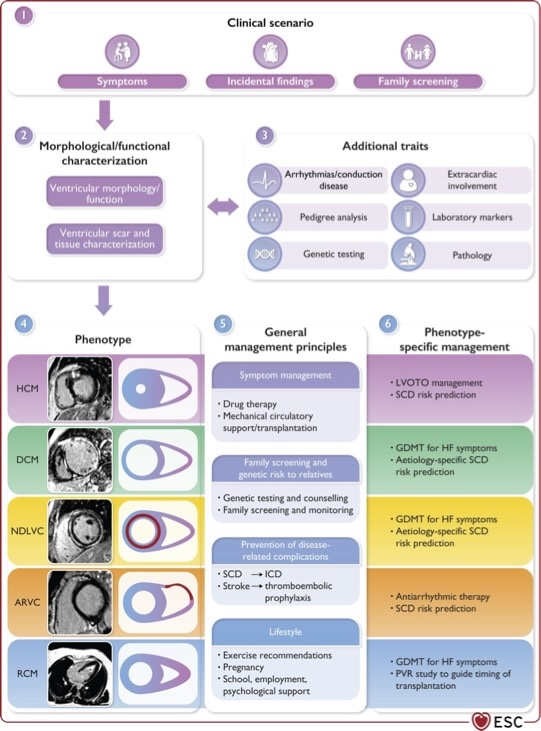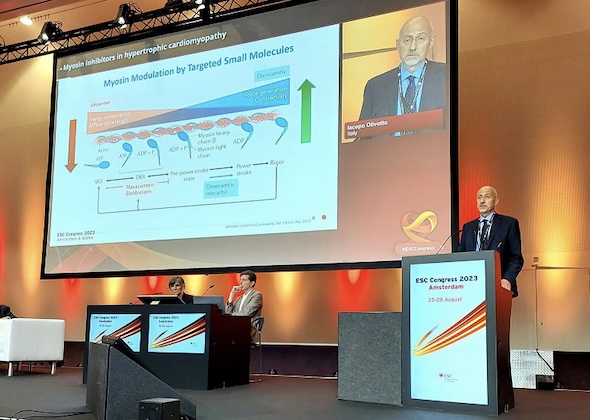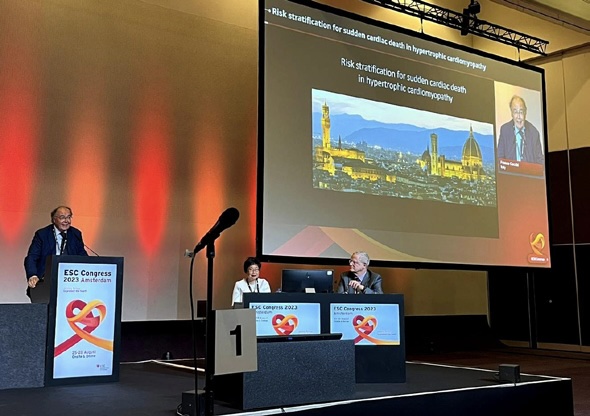di Niccolo Maurizi e Michele Ciabatti

Slide from ESC Clinical Practice Guidelines
There is much new knowledge and consequently opportunities for doctors and patients in terms of diagnosis and treatment options for patients suffering from cardiomyopathy. So, let's proceed in order. To recognize a Cardiomyopathy, a disease of the heart muscle, it is essential to describe well what instruments, such as the echocardiogram or magnetic resonance imaging, allow us to "see and measure", i.e. the thickness of the walls and the dimensions of the 4 chambers of the heart , i.e. the 2 atria and the 2 ventricles.
While it is well known that Cardiomyopathies include hypertrophic cardiomyopathy when the walls have a thickness greater than normal, dilated cardiomyopathy when the cavities are larger, arrhythmogenic cardiomyopathy of the ventricle when there are many arrhythmias coming from the right ventricle, restrictive cardiomyopathy when the cavity of the ventricle is reduced, the addition of cardiomyopathy of the non-dilated left ventricle is new. The latter type is identified through Cardiac Magnetic Resonance and genetic analysis and underlines that these two tests are becoming fundamental for all our patients, examined because they have symptoms, or an abnormal ECG and/or Echocardiogram.
It is important, as always, to carry out these tests in specialized centers and/or with cardiologists with extensive experience, which allow the diagnosis to be clarified and the optimal therapy to be indicated. The available therapies are evolving rapidly, as there are now treatments increasingly targeted at the alteration responsible for the development of the disease. So far, in fact, it has been possible to identify the symptoms, treat them and try to protect patients as much as possible to improve quality of life and survival.
Only in recent years has it been possible to influence the specific cause. An example is cardiac amyloidosis, a disease that can also be hereditary, which causes a progressive stiffening of the heart, reducing its elasticity. The new drugs are more effective especially in the initial stages of the disease, with better effects in patients who have not yet developed too serious organ damage.
But it is above all for patients with Hypertrophic Cardiomyopathy that there is the greatest news. In fact, thanks to the recent understanding of the basis of the disease, i.e. the presence of a heart with an "enhanced" engine, a new class of drugs has been developed, cardiac myosin inhibitors. These drugs act by reducing the power of the heart and therefore using a smaller amount of energy. In other words, and sorry for the metaphor, it's about transforming a racing car into an excellent, stable and reliable means of transport capable of ferrying us on life's adventures.

Prof. Olivotto – Amsterdam Congress
These drugs, thanks also to the work of Prof. Iacopo Olivotto and the team of the Cardiomyopathies Unit of Careggi, have shown in the EXPLORER-HCM study to improve exercise capacity and quality of life by reducing the gradient in symptomatic patients with hypertrophic obstructive cardiomyopathy . Therefore, these guidelines recommend these drugs for the treatment of those patients who have not experienced benefit after being treated with beta blockers, calcium channel blockers, or disopyramide.
The hope is that in the next 6-12 months they will be made available in Italy (at the moment in Europe it is only available in Switzerland). However, as doctors and researchers we are working to better understand how to use these drugs safely. When a new drug is placed on the market, there are often still many questions to answer, especially how to identify the subgroup of patients who may not benefit from it (the technical term is “non-responders”) and those who may experience “side effects” .
Furthermore, much attention was given to physical exercise and sport. Having cardiomyopathy does not mean giving up physical activity. Even in the most difficult cases, these guidelines recommend that, under the guidance of an expert, the patient should be guided in choosing safe exercises suited to their needs. So let's all activate our pedometers and get busy!

Prof. Cecchi – President of AICARM – Amsterdam Conference
Last observation, for the first time in history, these guidelines saw the participation of a patient representative in the writing committee and underlined the important role of patient associations in helping affected patients to deal with the different problems or decisions to be made. AICARM APS is ready to respond to the needs of Italian patients.
In any case, the publication of the first European Guidelines, together with the future availability of new specific drugs for the different types of Cardiomyopathy, promises the beginning of a new era for patients with cardiomyopathy, who until now have struggled to find centers to turn to to have a precise diagnosis and an optimal therapeutic indication.
